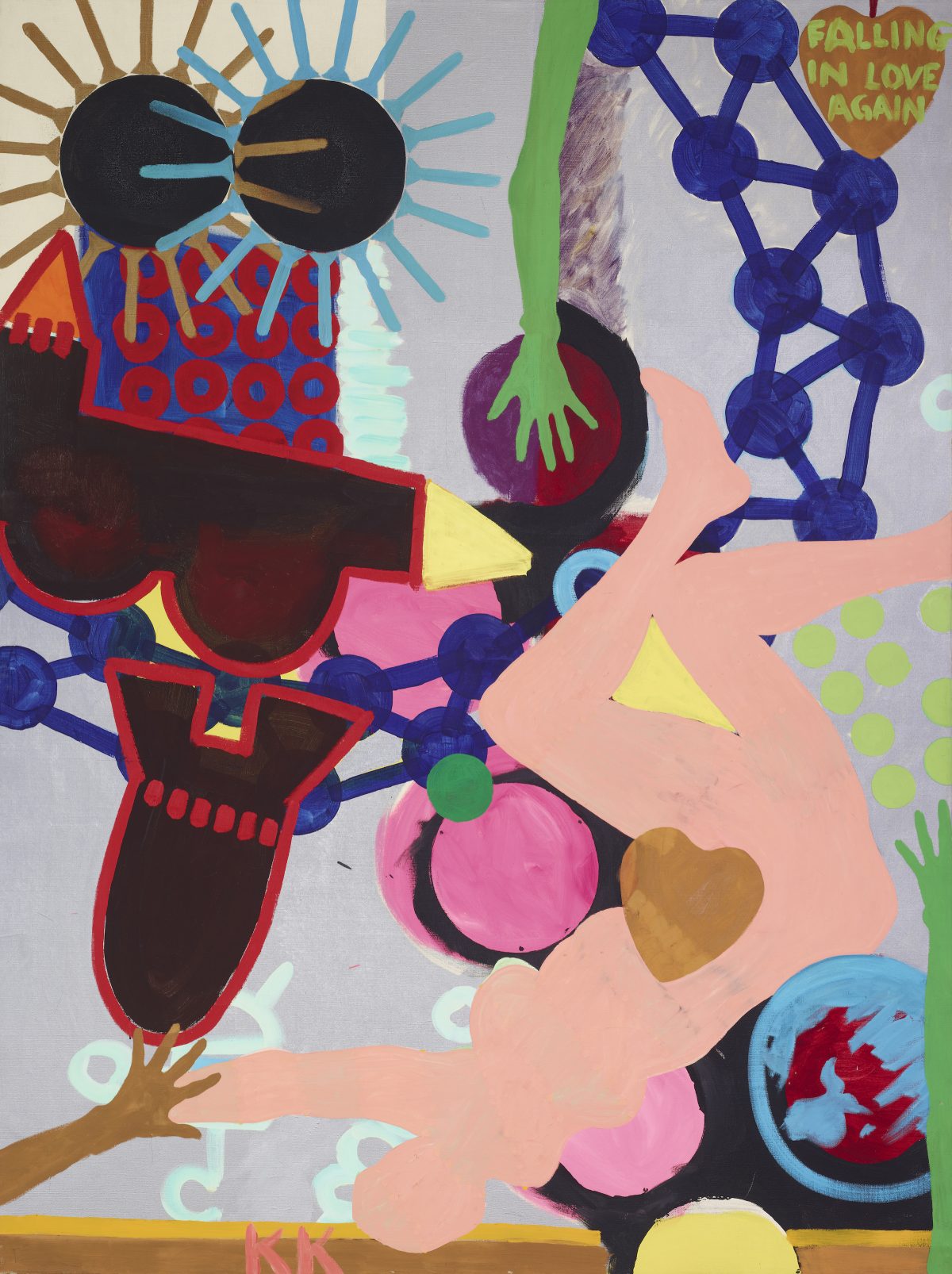
LOS ANGELES — “I always want to do what I’m afraid of,” the late artist Kiki Kogelnik wrote in a statement she gave in the mid-1970s. She was referring to her parachute jump off the iconic steel tower at Coney Island, a moment when her desire for the unknown overcame her sense of danger and she leapt into space. But she was also remarking on the conditions of her art, indicating the boundaries she’d crossed both geographically and pictorially.
Born in 1935, Kogelnik was raised in the postwar ruins of Austria. After studying at the Academy of Fine Art in Vienna with a predominately male group of abstract artists, she traveled around Europe. In 1960, at the Venice Biennale, she fell into a tumultuous love affair with the American painter Sam Francis. He was 12 years older, and during the first year they were involved, recovering from tuberculosis. But he encouraged Kogelnik to use his studio in New York. It was 1961, when the height of the Cold War coincided with the cacophonous birth of Pop culture.
Covering Kogelnik’s formative years in the United States, Falling at Kayne Griffin is the first solo exhibition of her paintings in Los Angeles. A powerful and revelatory display of 15 never-before-seen early works, the show covers the period during which Kogelnik evolved from an abstract painter to an avant-garde artist with her own figurative style. Though created nearly 60 years ago, these transitional artworks of women’s bodies, synthesized with the machinery of consumerism and dominating the canvas, feel exuberantly contemporary.

Arriving in downtown New York, Kogelnik was enthralled by the surplus of material goods that she encountered in her new environment, a stark contrast to her impoverished European childhood — chewing gum, television sets, telephones, cars, kitchen gadgets, and, of course, the rocket ships of the space race. Alternately fascinated and skeptical, the perspective of the stranger in a strange land gave Kogelnick a keen vantage point from which to observe the dehumanizing effect of American excess.
While visiting Francis in Santa Monica in 1962, she wrote her mother: “I see so many new things here — people live so differently here — it is the first time in my life that I am in a ‘foreign’ country. You sit in your car and eat — there are girls dressed in uniforms who bring you the food to the car. You can see movies from the car […]. But the funny thing is — all these things do not make people happier.”
Starting with “California Man” (1960), a painting of a phallic rocket-ship done in gestural brushstrokes, Kogelnik slowly exorcised all the unnecessary elements from her picture plane. Three unique studies on paper, each untitled, were begun in Francis’s Paris studio in 1960, then reworked a year later when, alone in New York, Kogelnik took a pair of scissors to the work. She cut the extraneous away, freeing the central, neon-colored shapes from their decorative backgrounds. It was a premonition of her future: the cutout silhouetted bodies and the sewing scissors that would become signatures of her later work. In ravishing synthetic colors and distilled configurations, she portrayed the power, danger, beauty, and isolation of technology on the human form — particularly on women’s bodies.

By the summer of 1961, when she painted “Marilyn,” a voluptuous lemony tribute to the screen goddess, Kogelnik had replaced the central phallic image with one that connotes an intensely luscious female sexuality.
In “Falling in Love Again,” created in 1962 during the Cuban Missile Crisis, Kogelnik linked her personal narrative of love with the geopolitical standoff between the USSR and the USA. Two radiating Sputnik satellites intersect as a rocket detonates below. A woman’s body plunges towards the small orb of blue earth as arms reach to catch her.
By 1964, Kogelnik had found her independence from abstraction, supplanting gestural style with crisp, graphic forms. She returned to depicting the universe in “Outer Space,” in which two bodies, one pink and one blue, disentangle in a field of shimmering, stenciled dots. (Roy Lichtenstein was a good friend.) The dots expand and contract, creating a suction at the top of the painting. It is territory that is neither East nor West, past nor present, but a cosmic realm. In uncharted space, Kogelnik offers us a vision of bodies released from history and women from the domination of the mundane consumerist trappings that imprison them. For it is the pink, female silhouette that reaches upwards and away, towards the outer limits and untethered freedom.
-

Kiki Kogelnik, “Falling in Love Again” (1962), oil on canvas, 71 15/16 x 54 inches (© Kiki Kogelnik Foundation, courtesy the Kiki Kogelnik Foundation and Kayne Griffin, Los Angeles) -

Kiki Kogelnik, “Outer Space” (1964), oil and acrylic on canvas, 72 1/16 x 54 1/8 inches (© Kiki Kogelnik Foundation, courtesy the Kiki Kogelnik Foundation and Kayne Griffin, Los Angeles)
Kiki Kogelnik: Falling continues at Kayne Griffin (1201 South La Brea Avenue, Mid-Wilshire, Los Angeles) through August 28.
0 Commentaires